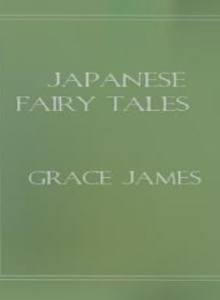Japanese Fairy Tales

Book Review: *Japanese Fairy Tales ( Timeless Japanese Folklore: Enchanting Fairy Tales of Magic, Morals, and Mythology)
The traditional Japanese folk stories presented in ‘Japanese Fairy Tales’ form a timeless classic under the compilation of Yei Theodora Ozaki. The compilation first appeared in print in 1908 while introducing readers to various magical fables and knowledge and Japanese cultural stories through its pages. Readers from any age group can enjoy this book as their first exposure to Japanese folklore.
Summary of the Book
The wide collection within the book presents various fairy tales that illustrate Japanese cultural practices and conceptual traditions. Among the most memorable Japanese tales featured in The Japanese Fairy Book is *Momotaro the Peach Boy* alongside *The Bamboo Cutter with His Moon Child* and *Urashima Taro the Fisher Lad*. Different characters embody heroic and supernatural qualities in these stories which showcase important moral lessons about kindness as well as bravery and elder respect.
The story of *Momotaro the Peach Boy* narrates how a boy emerged from a massive peach. His animal companions enable Momotaro to conquer the wicked ogres thus restoring peaceful conditions for his village. A beautiful girl exists within a shining bamboo stalk in the story named *The Bamboo Cutter and the Moon Child*. As she matures under the care of kind parents she discloses her moon origin to the world. Several stories available in this publication reveal traditional aspects of Japanese heritage.
Themes and Messages
This book contains fairy tales that pass along vital lessons to learners about life. Most tales in this collection present a combination of honest conduct with loyal behavior together with an emphasis on fighting against evil forces. Nature plays a vital part throughout fairy tales since various stories depict human relationships with both animals and spirits. Superstitious elements add excitement to these tales which consistently deliver eternal life principles.
Throughout the book, there exists a recurring motif where excellent conduct yields positive outcomes but committing negative actions produces consequences. The narrative shows that virtue brings fortune to its practitioners yet leads unfortified characters to meet punishment. Through its educational content, the book manages to be both enjoyable and purposeful.
Writing Style and Language
The writing of Yei Theodora Ozaki presents content through direct and interesting language. The author maintains the authentic essence of Japanese tales by adapting them into a language accessible to English readers. Her literary language provides vivid descriptions that let readers see the enchanting settings present in the stories.
The book provides entertainment to children yet adults will also appreciate its content. The stories feel both current and energetic after Ozaki retells traditional folklore. The book offers both poetic and tender storytelling that creates an enjoyable reading experience.
Final Thoughts
Japanese Fairy Tales delivers an excellent reading experience to those who love folklore and fairy tales. Through this book, readers gain insights into Japanese customs as well as cultural elements. The book contains thrilling tales alongside charming yet meaningful lessons that persist in readers’ memories.
The book provides an excellent reading experience for people interested in fairy tales or Japanese mythology. The stories within this book present universal appeal which creates enjoyment for people of every age group.


